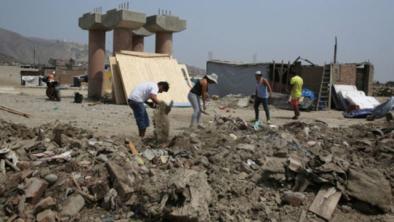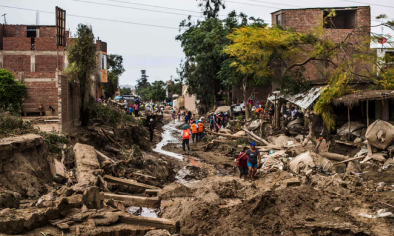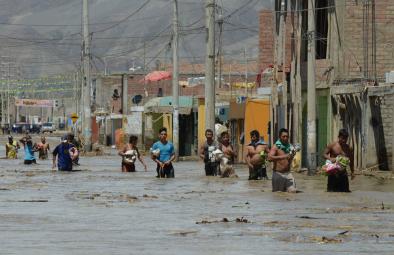Science Source
Assessment of the Impacts of Climate Change on Mountain Hydrology : Development of a Methodology through a Case Study in the Andes of Peru
Overview
- States that climate change is expected to result in larger temperature increases (anomalies) at high altitudes compared with surrounding lowlands. In the Andes, this may lead to the accelerated retreat of tropical glaciers, the drying of unique neotropical highmountain wetland ecosystems locally known as páramos or bofedales, as well as increased weather variability and weather extremes, all of which will aff ect water regulation
- States that global warming would result not only in changes in mean climate conditions but also in increases in the amplitude and frequency of extreme events
- Generates data by running the MRI-AGCM3.1 model in a supercomputer called the Earth Simulator-2, analyzing only a few climate variables, including temperature, rainfall, soil moisture and evaporation at a very high resolution (20 km), capturing the intensity and frequency of extreme weather events
- States that warmer temperatures are affecting evaporation rates, water storage in natural and man-made reservoirs, soil moisture and rates of evapotranspiration of mountain vegetation (p.8)
- States that some extreme weather events have changed in frequency and/or intensity over the last 50 years: It is likely that the frequency of heavy precipitation events (or the proportion of total rainfall from heavy falls) has increased over most areas
- States that a wide array of satellite and field measurements documents that climate is affecting water stocks and flows in mountain systems. In practice, this would most likely mean higher fluctuations and loss of streamflows, which would have a direct impact on the available water resources, power supply and ecosystem integrity.
Temperature
- Finds that high-mountain ecosystems, including páramos, are among the environments most sensitive to climate change (p.11)
- Minimum temperatures during the warmest days (MTmin) exhibit statistically significant trends at altitudes below 2,500 m, ranging from +0.1 to +0.5 C/decade
- Average minimum temperatures (ATmin) gathered at weather stations located below 2,500 m exhibit increasing trends that range from +0.1 to +0.6 C/ decade
- Minimum temperatures during the coldest days exhibit statistically significant increasing trends at all altitudes, ranging from +0.10 to +0.90 C/decade
- Increases in these extreme temperatures at higher levels are more than twice what is observed on average at lower altitudes
- Finds that climate impacts have already altered the atmospheric circulation patterns of producing and moving water vapor within these ecosystems. It is possible that these changes have contributed to the disappearance of high altitude water bodies, as well as to the increased occurrence of natural and man-induced mountain fires (p. 12)
Precipitation
Average precipitation (pp. 15-16)
- Simulates (using a 1979-2003 reference period) the annual mean rainfalls in the near future (2015–2039) and by the end of the 21st century (2075–2099)
- Finds that the largest anomalies (difference with the reference period) are seen over the Andes Cordillera while the smallest changes are seen in the eastern lowlands and the southern coastal areas (see image below)

Extreme precipitation (pp. 16-17)
- Considers two distinct impacts: (i) changes in heavy precipitation (measured through the maximum total in five days in millimeters), and (ii) days without rain (measured through the number of consecutive dry days)
- Figure 3.3 (below) shows the projected changes in the heavy precipitation in comparison with today, at both 60-km and 20-km resolutions for the near future and end of the century
- The model suggests that there will be an increase of heavier downpours throughout Peru, leading to an increased likelihood of floods and reduced stability of streamflows
- The largest rainfall intensification is found over the northwestern coast and the Andean Cordillera
 Models also show its likely that climate change would not only cause intensification of rain, but would also lead to an increased number of days without rain
Models also show its likely that climate change would not only cause intensification of rain, but would also lead to an increased number of days without rain
Related Content
Headline

Apr 19, 2017 | The Guardian via AFP
Death toll rises to 113 in Peru floods, mudslides
Headline

Apr 13, 2017 | the Guardian
How can Peru prepare to withstand more devastating floods and landslides?
Headline

Apr 9, 2017 | ReliefWeb
Heavy rains cause landslides, flooding in Colombia and Peru
Headline

Apr 7, 2017 | Inside Climate News
Peru's floods follow climate change's deadly trend


